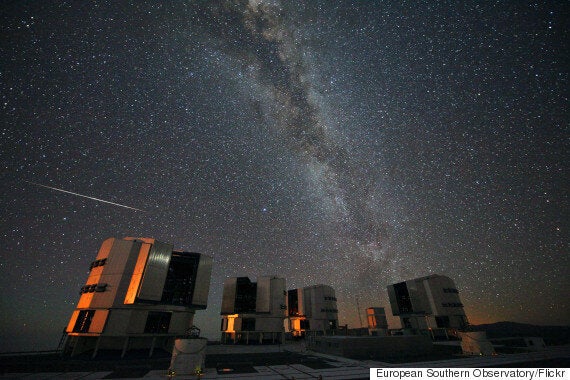The Perseids Meteor Shower is set to be a spectacular show this year, lighting up the night sky with a cosmic display that could boast as many as 100 meteors per hour.
NASA will be livestreaming the meteor shower's peak from its Houston control centre starting at 3AM GMT on Thursday 13 August (see above).

Don't panic if you're not up for staying awake that late, the coverage will continue well into Friday 14 August including live footage of the night sky and expert analysis on what causes meteor showers and how best to see them yourself.
SEE ALSO:
- Meteor Strike Over Texas Creates Green Ball Of Fire, Ground Shakes
- Meteor Explodes Over Devon: Video And Pictures Of The 'Biggest UK Strike Ever'
- Meteor Strikes Nicaragua As Giant Asteroid Misses Earth
- Skydiver Almost Hit By Meteorite: Unbelievable Video Of Norwegian Anders Helstrup's Near Miss
- Moon Explosion: Massive Meteor Crashes Into The Moon As Nasa Watches
When Can I Watch The Perseids?
The Perseids will hit its peak starting the evening of Wednesday 12 August and will finish on Friday 14 August.
While officially the show starts 11 July - 26 Aug, the best chance for the average joe like you and us is by turning our heads to the sky during peak time.
Where Can I Watch The Perseids?
Your garden! Well, providing your garden isn't in the centre of any major towns or cities, otherwise, while you might see some, the full show will sadly lose the majority of its impact.
There is good news however. The reason this year is particularly special is the Moon. While normally acting like a giant light bulb that sucks the joy out of everything the Moon is actually at its darkest phase.
That means, providing your light pollution isn't so bad this year's Perseids could prove to be one of the most impressive on record.
READ MORE:
While you could always use binoculars the tiny shards are moving at a staggering 36 miles per second, so they'll be producing quite the light show when they hit the atmosphere.
Our advice? Find a local park, or even look and see if local astronomy groups are holding special viewing meetings. Head over with a flask, a comfy chair and then sit back and enjoy the show.
What Is The Perseids Meteor Shower?
The shower is an astronomical event that's created by the Swift-Tuttle comet, a massive 27km body of ice that hurtles through our solar system every 130 years.
As the comet passes closer to the Sun the heat starts to break it down causing huge lumps of ice to break away.
Travelling at up to 36km per second these lumps of ice then hit the Earth's atmosphere and burn up causing the 'shooting stars' that we know and love.